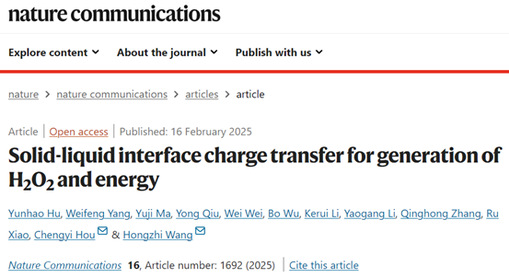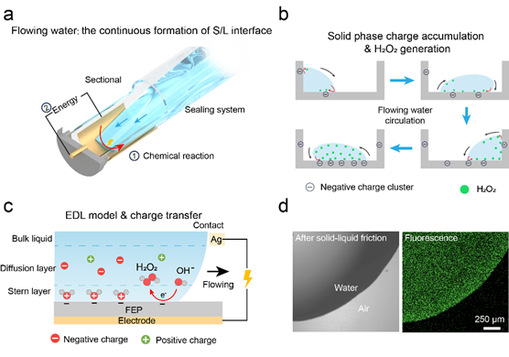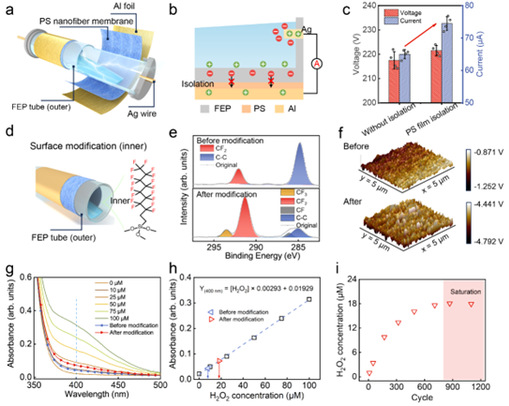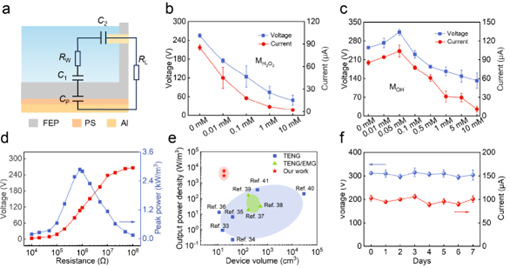Recently, the Advanced Fiber Materials National Key Laboratory and the College of Materials Science and Engineering at our university, led by Wang Hongzhi and Hou Chengyi, developed a high-efficiency solid-liquid power generation device (H2O2 & energy generator, HEG) and conducted in-depth research on the mechanisms of chemical reactions and energy transfer at the solid-liquid interface. The related results were published in Nature Communications under the title Solid-liquid interface charge transfer for generation of H2O2 and energy. Donghua University is the first affiliation, with Professor Wang Hongzhi and Researcher Hou Chengyi as corresponding authors, and doctoral student Hu Yunhao as the first author.


The study used Kelvin probe force microscopy to verify that electron transfer dominates the charge transfer process between fluorinated ethylene propylene (FEP) and water. Some OH⁻ ions in the liquid phase lose electrons and convert into ·OH radicals, which further combine to form H2O2. This indicates that electron transfer at the FEP-water interface simultaneously drives the generation of both energy (electricity) and matter (H2O2). By designing a transistor-like structure, constructing a charge isolation layer, and modifying the solid-phase surface, a highly efficient solid-liquid power generation device was obtained. The device’s power generation efficiency was improved from three aspects: optimizing circuit design, reducing internal charge loss, and enhancing solid-liquid charge transfer efficiency. The study found that increasing the concentration of electron donor OH⁻ in the liquid phase can enhance the solid-liquid power generation performance, while the addition of H2O2 affects electron transfer at the solid-liquid interface, leading to reduced energy output from the solid-liquid system.


Proof-of-concept experiments demonstrated the application value of solid-liquid interface energy in fields such as ocean Internet of Things. For example, HEG can harvest energy from waves to potentially power coastal warning lights, wireless water level monitoring, and ship corrosion protection. These functions not only highlight the great potential of this technology in energy and environmental fields but also provide new ideas for the sustainable development of green energy.
